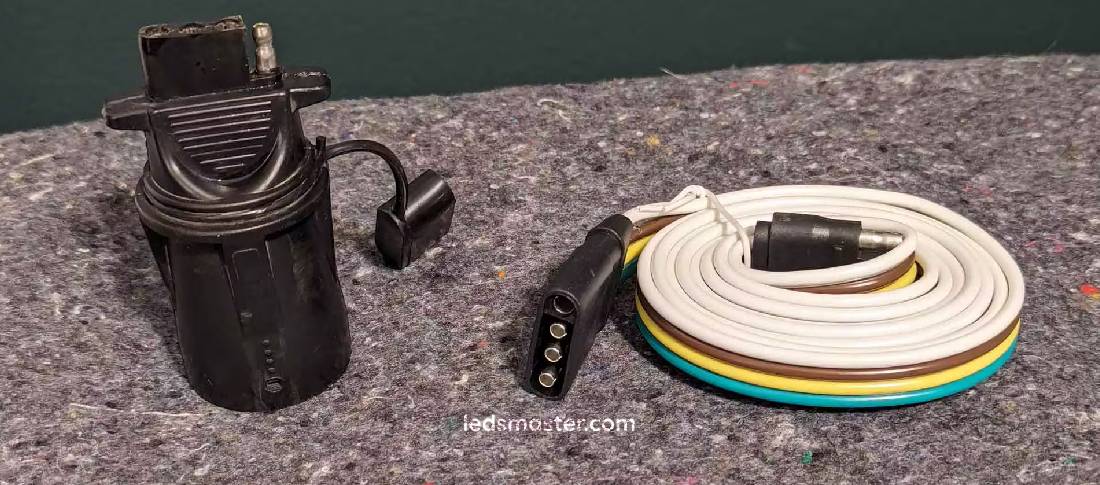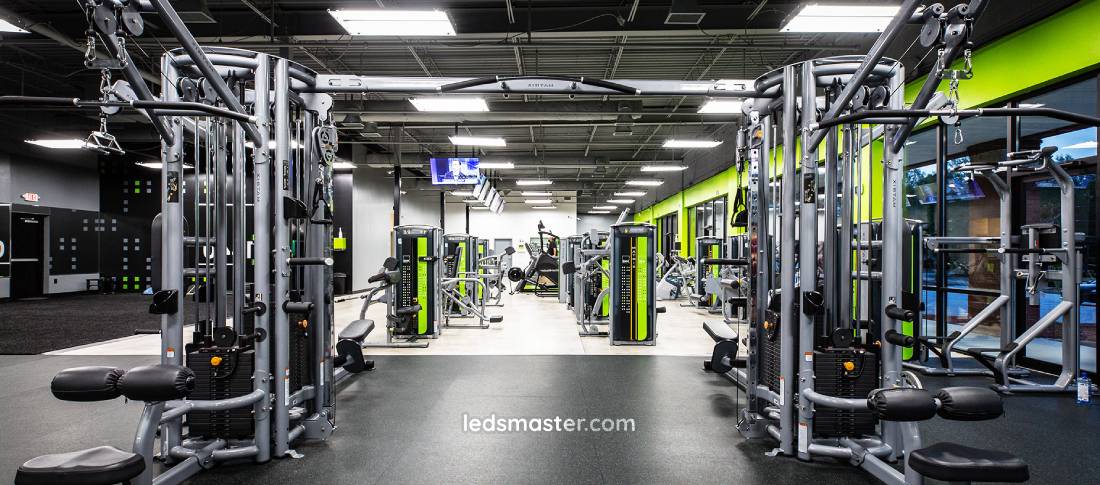One common question that arises is whether it is possible to connect LED lights without the use of traditional connectors. This inquiry touches upon aspects of practicality, installation, and safety, making it a critical consideration for both professionals and enthusiasts. This article delves into the nuances of connecting LED lights without connectors, exploring the methods, benefits, and potential challenges involved.
Table of Contents
ToggleUnderstanding LED Lighting Systems
To fully grasp the implications of connecting LED lights without connectors, it is essential to delve into the fundamental characteristics of LED lighting systems. Light Emitting Diodes (LEDs) are semiconductor devices that produce light through a process known as electroluminescence. Unlike traditional lighting technologies, such as incandescent or fluorescent bulbs, LEDs operate on a different principle. Instead of relying on filaments or gas discharge, LEDs use a semiconductor material that emits light when an electrical current passes through it.
The Science Behind LEDs
The science behind LEDs is rooted in their ability to convert electrical energy directly into light. In an LED, an electrical current flows through a semiconductor material, which contains a junction of different types of semiconductor layers. When the current passes through this junction, it excites the electrons and holes in the material, leading to the emission of photons as light. This process is highly efficient compared to traditional lighting methods, which often waste a significant portion of energy as heat.
LEDs are composed of a chip mounted on a heat sink, which dissipates any excess heat generated during operation. This design contributes to their low heat output, making LEDs a safer and more energy-efficient lighting solution. The reduced heat output is one of the key advantages of LEDs, as it minimizes the risk of heat-related damage to surrounding materials and improves the overall safety of the lighting system.
The Role of Connectors in LED Lighting
Connectors play a crucial role in the installation and functioning of LED lighting systems. They serve as the interface between the power source and the LED fixtures, ensuring a stable and reliable electrical connection. Without connectors, it would be challenging to establish a secure and efficient connection between the components of a lighting system.
Types of Connectors
Connectors in LED lighting systems come in various types, each designed to accommodate different installation scenarios. One common type is the plug-and-play connector, which offers a user-friendly solution for connecting LED lights. These connectors feature pre-molded plugs and sockets that facilitate quick and easy assembly. They are particularly useful in applications where flexibility is required, allowing for easy disconnection and reconnection of components.
Another type of connector is the terminal block. Terminal blocks consist of a series of metal screws or clamps that hold the wires in place, creating a secure electrical connection. This type of connector is often used in situations where multiple LED lights need to be connected in series or parallel configurations. Terminal blocks provide a reliable and organized solution, allowing for the connection of several wires with a single component.
Wire nuts are also commonly used in LED lighting systems. These connectors consist of a small plastic cap with a metal spring inside, which twists onto the ends of wires to create a secure connection. Wire nuts are effective for joining two or more wires together, providing a simple and efficient means of maintaining electrical integrity.
Importance of Connectors
The importance of connectors in LED lighting systems cannot be overstated. They play a vital role in facilitating the installation process by providing an easy means of connecting and disconnecting components. This convenience is particularly valuable in applications where maintenance or modifications are required. Connectors also contribute to the overall reliability of the lighting system by ensuring that electrical connections are secure and stable. A loose or faulty connection can lead to issues such as flickering lights, reduced performance, or even complete failure of the lighting system. By using high-quality connectors and ensuring proper installation, these risks can be minimized.
Furthermore, connectors play a crucial role in maintaining safety. They help to prevent electrical hazards by providing a secure and insulated connection between the power source and the LED fixtures. Properly installed connectors reduce the risk of short circuits, electrical shocks, and other potential safety issues. This is especially important in environments where electrical safety is a critical concern, such as commercial buildings, industrial facilities, and residential settings.

Can LED Lights Function Without Connectors?
The question of whether LED lights can function without connectors can be answered with a definitive yes, though it comes with some nuances. Connectors are commonly used in LED lighting systems to facilitate installation, maintenance, and reliable electrical connections. However, there are alternative methods to achieve the same functional outcomes. These methods can be particularly useful depending on the specific requirements of the installation and the type of LED lights being utilized.
Direct Wiring: A Viable Alternative
Direct wiring is one of the simplest and most direct methods for connecting LED lights without using traditional connectors. This approach involves manually connecting the LED lights to the power source using wires. The process begins with stripping the insulation from the ends of the wires, then twisting them together to form a secure connection. This connection is typically secured using electrical tape or wire nuts to prevent accidental disconnections or shorts.
Direct wiring can be a practical solution for small-scale installations or custom LED setups where connectors may not be readily available or necessary. It allows for a more streamlined connection process and can be particularly effective in scenarios where the installation is straightforward, and there is no need for frequent adjustments.
However, this method is not without its considerations. Ensuring proper insulation and creating secure connections is crucial to avoid electrical shorts, malfunctions, or safety hazards. The process of direct wiring can be less convenient if frequent maintenance or modifications are anticipated, as it may require reworking the connections each time adjustments are made.
Soldering: A Permanent Solution
Soldering is another technique for connecting LED lights without connectors, and it provides a more permanent solution. Soldering involves melting a filler metal known as solder to join the electrical components together. This method creates a highly reliable and durable connection, making it suitable for applications where long-term stability is essential.
The soldering process requires careful attention to detail. A soldering iron is used to heat the solder and apply it to the joints where the wires meet. Precision is critical, as overheating or improper application can damage the LED components or lead to poor connections. Soldering is particularly advantageous in professional installations where the permanence of the connection is desired, and connectors might be impractical or undesirable.
While soldering offers a robust and long-lasting solution, it requires a certain level of skill and experience. For individuals who are not familiar with soldering techniques, there is a learning curve associated with achieving clean, effective solder joints. Nonetheless, for applications where durability and reliability are paramount, soldering is a viable and effective alternative to using connectors.
Terminal Blocks: A Connector-Free Approach
Terminal blocks present a connector-free method for connecting multiple wires in LED lighting systems. These components consist of a series of metal screws or clamps that hold the wires in place, creating a secure and stable electrical connection. Terminal blocks allow for the connection of multiple LED lights in series or parallel configurations, offering a practical solution for more complex installations.
Using terminal blocks simplifies the installation process by eliminating the need for traditional connectors. This method also enhances the overall reliability of the system by providing a solid connection point for multiple wires. Terminal blocks make it easier to adjust or maintain the lighting system, as changes can be made by loosening and re-tightening the screws or clamps without having to deal with individual connectors.
It is important to ensure that the terminal blocks used are rated for the current and voltage requirements of the LED lights. Using terminal blocks that are not adequately rated for the system’s specifications could lead to overheating or potential failure. Therefore, selecting the appropriate terminal blocks for the specific needs of the installation is crucial to maintaining the system’s performance and safety.

Benefits of Connecting LED Lights Without Connectors
Streamlined Installation
One of the primary advantages of connecting LED lights without connectors is the streamlined installation process it affords. Direct wiring and soldering eliminate the need for additional components, simplifying the setup. This can be particularly advantageous in scenarios where space is at a premium or where a clean, minimalistic appearance is desired.
In installations with limited space, such as compact lighting fixtures or tight areas behind walls and ceilings, connectors can sometimes create congestion or complications. By bypassing connectors, the installation can be more compact and less cluttered, which may simplify the process and improve the overall aesthetics of the setup.
Moreover, without connectors, the risk of connection failures or loose connections is reduced, leading to a potentially more reliable and stable installation. Direct wiring and soldering methods can result in a more streamlined and efficient process, especially for projects that require a high degree of precision and cleanliness.
Customization and Flexibility
Another significant benefit of connecting LED lights without connectors is the enhanced customization and flexibility it provides. Direct wiring and soldering methods allow for precise control over the arrangement and configuration of the LED lights. This level of customization is especially valuable in creative or bespoke lighting projects where standard connectors might not be suitable or may impose limitations.
For example, in artistic installations or unique architectural lighting designs, direct wiring allows for intricate and tailored configurations that standard connectors might not accommodate. By eliminating connectors, designers and installers have greater freedom to position and align LED lights exactly as needed to achieve the desired visual effects and performance. This flexibility can be crucial for creating custom lighting solutions that meet specific design criteria or functional requirements.
Furthermore, connecting LED lights without connectors can facilitate modifications and adjustments to the lighting setup. In projects where the layout or design may evolve over time, direct wiring and soldering offer the ability to reconfigure or alter the setup more easily than if connectors were used. This adaptability is beneficial in dynamic environments where changes to the lighting arrangement might be needed.
Cost-Effectiveness
Eliminating connectors can also result in cost savings, particularly in large-scale or specialized lighting installations. Connectors, while convenient, can add to the overall expense of a lighting system, especially when used in substantial quantities or for specialized configurations. By opting for direct wiring or soldering, one can reduce the cost of materials and potentially achieve a more budget-friendly solution.
In many cases, the cost of connectors can accumulate quickly, particularly when high-quality or specialized connectors are required. Direct wiring and soldering methods, on the other hand, generally involve fewer components and materials, leading to reduced costs. This can be especially advantageous for large projects or installations where the budget is a significant consideration.
Additionally, while the initial investment in connectors might seem minor, the cost of maintaining and replacing connectors over time can add up. By choosing to connect LED lights without connectors, one may not only save on the upfront costs but also reduce long-term maintenance expenses associated with connector replacements or repairs.
Potential Challenges and Considerations
Safety and Reliability
Safety is a critical concern when connecting LED lights without connectors. Proper installation is essential to prevent electrical hazards such as short circuits, overheating, or even fire risks. When using methods like direct wiring or soldering, the quality of the connections and insulation plays a vital role in ensuring the safety of the lighting system.
In direct wiring, the ends of the wires must be stripped correctly and twisted tightly to form a secure connection. If not properly insulated, these exposed wires can come into contact with other conductive materials, leading to short circuits or electrical shocks. To mitigate these risks, it is crucial to use appropriate insulation materials and techniques, such as electrical tape or heat shrink tubing, to cover and protect the connections.
Soldering, while offering a robust and reliable connection, requires careful handling to avoid overheating the LED components. Excessive heat can damage the LED or cause solder joints to become brittle, which could lead to electrical failures over time. Ensuring that the soldering process is conducted with precision and proper temperature control is essential for maintaining both safety and reliability.
Additionally, any potential issues with connections, such as loose or poorly made joints, can result in inconsistent performance or even failure of the lighting system. Regular inspections and maintenance are necessary to ensure that all connections remain secure and functional, thereby safeguarding the overall reliability of the LED lights.
Maintenance and Repairs
Maintaining and repairing LED lights connected without connectors can be more complex compared to systems with traditional connectors. Connectors offer the convenience of easily disconnecting and reconnecting components, which is particularly useful for troubleshooting or replacing faulty parts. When connectors are not used, addressing issues or making changes to the system often involves more effort and time.
For direct wiring setups, any need to troubleshoot or replace a component requires disconnecting and rewiring the affected parts. This can be labor-intensive and may require additional tools or materials, such as wire strippers, soldering irons, and insulation materials. The process of reworking connections can also be disruptive, especially if it involves accessing hard-to-reach areas.
Similarly, in soldered connections, repairing or replacing components can be challenging. If an LED or part of the wiring fails, the soldered joints must be carefully desoldered, the faulty component replaced, and new soldering done. This process requires skill and patience, and any mistakes during repair can lead to further complications or damage.
Therefore, while direct wiring and soldering offer certain advantages, their impact on maintenance and repair should be carefully considered. In scenarios where frequent adjustments or repairs are anticipated, the convenience of connectors might outweigh the benefits of connector-free methods.
Professional Expertise
Connecting LED lights without connectors, particularly through methods like soldering, requires a certain level of expertise. Soldering involves precise handling of heat and materials, and improper techniques can lead to poor connections or damage to the LED components. For individuals who are not experienced in soldering or other connector-free methods, there may be a learning curve involved.
Professional expertise can significantly enhance the quality and safety of the installation. Experienced technicians or electricians are familiar with best practices for wiring and soldering, ensuring that connections are made securely and effectively. They can also troubleshoot and address any issues that arise during the installation process.
For those without the necessary skills or experience, seeking professional assistance or investing time in learning the required techniques is crucial. Proper training and understanding of the methods involved can help achieve a successful and safe installation, ultimately leading to a more reliable and efficient lighting system.
Conclusion
While connecting LED lights without traditional connectors offers benefits such as streamlined installation, customization, and potential cost savings, it also presents challenges related to safety, maintenance, and expertise. Ensuring secure, insulated connections is crucial to prevent electrical hazards, and maintaining a connector-free system may require more effort and skill, especially in troubleshooting and repairs. For those unaccustomed to methods like direct wiring or soldering, professional expertise is often essential to achieve a reliable and safe lighting setup. Balancing these factors can help in making an informed decision based on the specific needs of the lighting project.

